Backgrounds
April 28, 2013 ・ Blog
I got a bit obsessed with this showcase of 125 animated fighting game backgrounds today. Just the backdrops from different stages (as far as I can tell all by SNK, dating from the mid to late 90s, and probably ripped from SNK Wiki), stripped of player sprites and health bars, they’re gorgeous flowerings of visual design.
Truth be told, I’m a bit tired of pixel art, but work like this aspired to transcend mere pixels. And I think that’s why it still packs a punch for me today. It’s evidently not content with the paltry colour depth and resolution it’s forced to use. It’s not about celebrating its form, unlike today’s pixel art, which is all about the form and evoking aesthetics of the past without quite nailing their fundamental nature. Instead, these backgrounds are all about what they depict – little scenes, ripe with little stories and humour, and inflected with travel pornography.
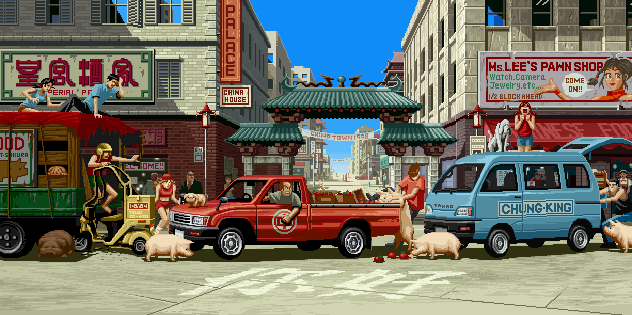
There are the guys stealing boxes out of the blue van; the guy straining to get the pig out of the tomatoes in the back of the red pickup; the woman tugging the guy’s trouser leg for attention on top of the truck; the dog and its excited owner. This fight is staged in a place with its own history and populated by people who have nothing to do with your dumb fight.

There’s quiet genius in many apparently simple ideas. Puddles reflecting the sky and the flow of water into them at the back here is a fantastic way of making the flagstones dynamic and interesting.
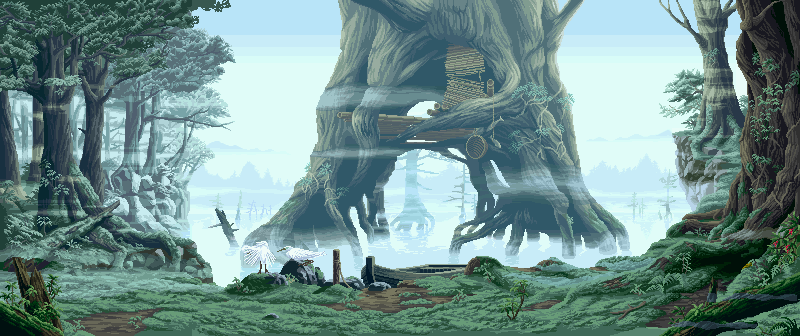
Lots of them, like that The King of Fighters stage and this one, take you to exotic and romanticised east Asia. Here, the gentle movement only emphasises the sense of silence, ready for the contrast of the bout itself.
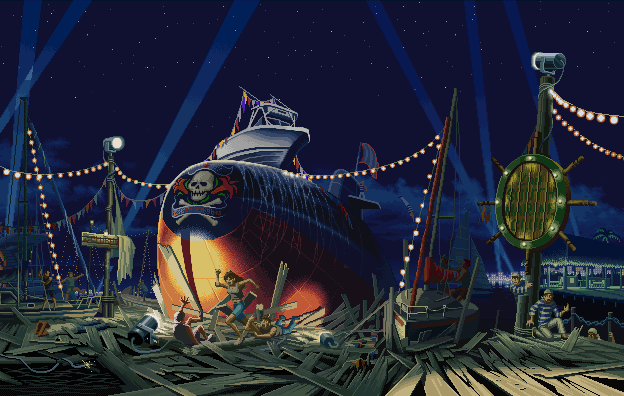
And then there’s this one, which is all movement.
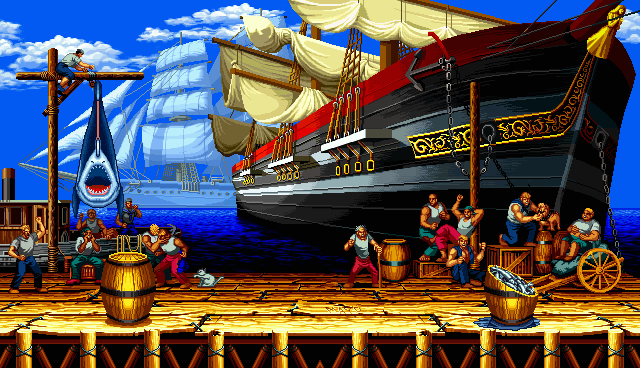
I spent a few minutes mesmerised by that revolving shark. I suppose the constant repetition also taps into the reason why gifs (and latterly Vine) are so compulsive.
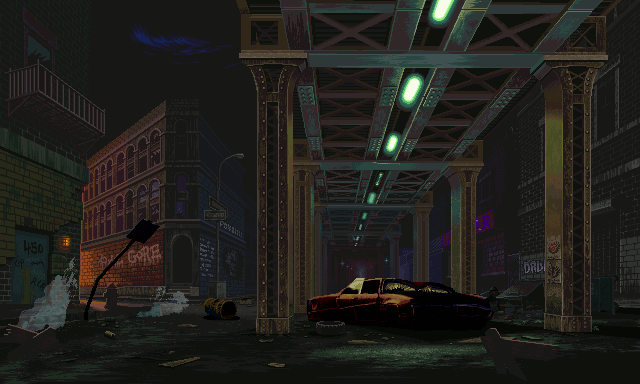
Some totally reference film, instantly evoking a specific milieu.
Anyway, for me, these backgrounds’ beauty lies in their navigation of technical constraints. They push through the problems of low resolution with sharply outlined elements or subtle gradations. They’re incredibly careful with the number of animations they show and how many frames of animation from which they’re made. Some look like living scenes, even if the effect’s set by a surprisingly small number of moving components.
To me, that stuff is lovely. The techniques they used are something to really celebrate, even if technology has moved games far beyond them now. I’m happy to leave that artistry in the past, though, and besides, today’s games use new techniques that are just as worthy of celebration. But perhaps it takes a decade or two to allow us to fully appreciate them.